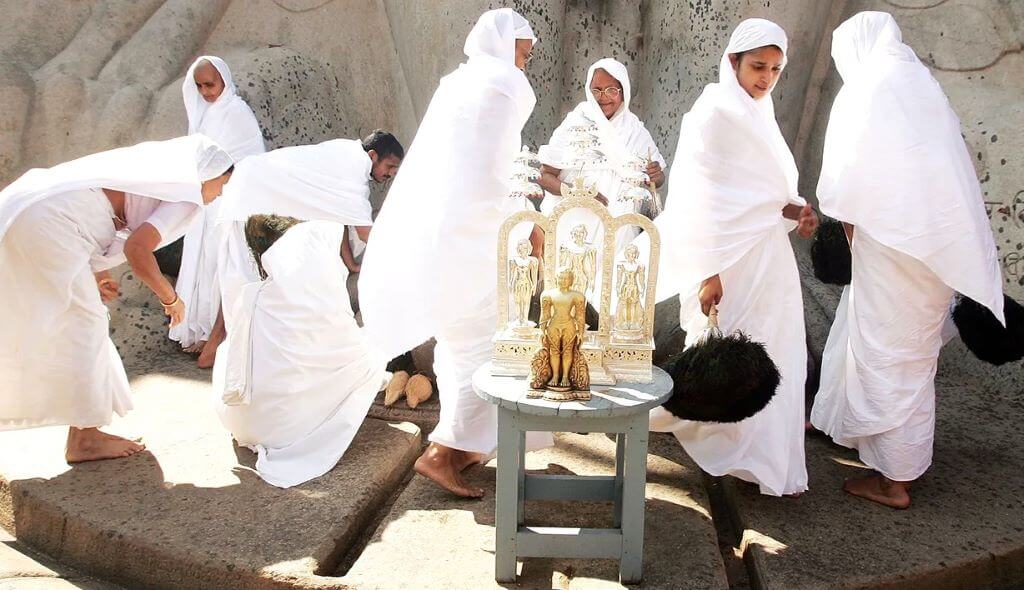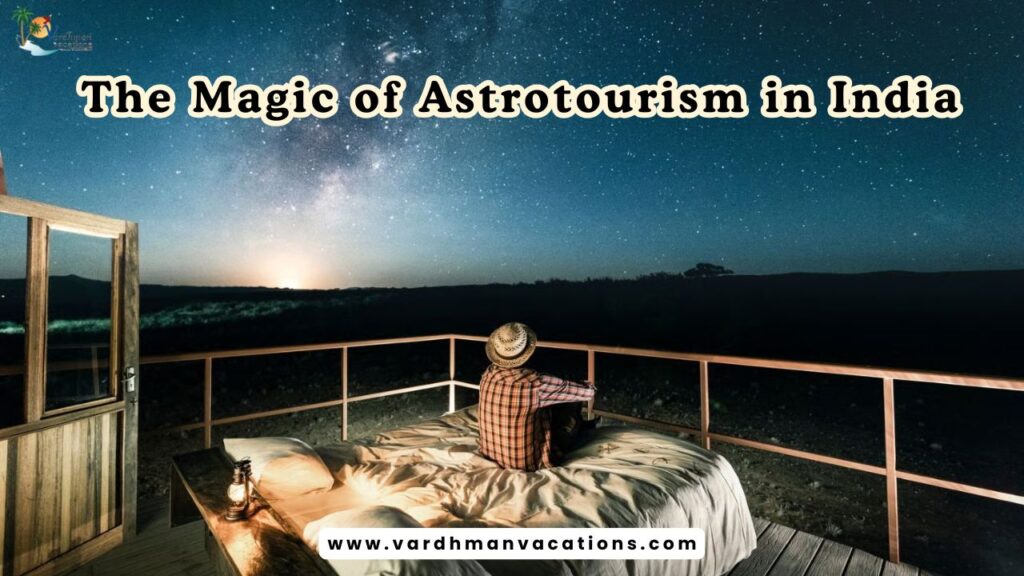Jainism stands among the world’s oldest living religions, tracing its origins to India more than 2,500 years ago. Its central aim is spiritual liberation — freedom from the endless cycle of birth and rebirth — achieved by attaining moksha, a state of all-knowing purity. Followers believe this liberation is possible through a life rooted in ahimsa (non-violence), striving to cause the least possible harm to any living being.
The faith’s teachings were shaped and preserved by a succession of 24 Tirthankaras, or enlightened teachers. The last of these, Vardhamana Mahavira, was a contemporary of Gautama Buddha. Both Mahavira and Buddha emphasized self-discipline, meditation, and ascetic living as the path to salvation — teachings that stood apart from the ritual-centric practices of the Vedic priests of their era, who acted as intermediaries between humans and the divine.
In modern India, Jains represent only about 0.4% of the population, making them the smallest among the nation’s six major religious communities — after Hindus, Muslims, Christians, Sikhs, and Buddhists. Despite their small numbers, Jainism continues to exert a profound spiritual and cultural influence. Yet, as a 2021 Pew Research Center survey of nearly 30,000 Indians revealed, much of the country still knows little about this ancient, non-violent faith. The study highlights six key insights into India’s Jain community and their way of life.
Very Small Share of India’s Population
Jains are primarily concentrated in western India, with the largest numbers found in Maharashtra. Although Jainism’s early roots trace back to eastern India, particularly regions like Bihar where Lord Mahavira was born, the community’s demographic center gradually shifted westward. Historians believe this migration began around 300 B.C.E., when Jains moved toward western kingdoms that offered more favorable social and economic conditions.
Today, western India remains the heartland of Jain culture and influence. In Mumbai, the bustling capital of Maharashtra and India’s leading commercial hub, around 4% of the city’s population identifies as Jain—a testament to the community’s enduring presence and prosperity in the region.
Regional Concentration
Jains stand out in India for their high levels of education and affluence. According to the 2011 Census, about 34% of Jain adults hold a college degree, compared with just 9% of the overall Indian population. Data from India’s National Family and Health Survey further shows that the vast majority of Jains belong to the top wealth quintiles, underscoring their strong economic position.
In India, wealth and education are often closely tied to caste. Interestingly, Jains are the only religious group in India where a majority identify as members of the General Category, or higher castes. In contrast, about 68% of Indians overall belong to lower caste categories—Scheduled Castes, Scheduled Tribes, or Other Backward Classes—while only 20% of Jains associate with these groups.
This combination of academic achievement, economic success, and social status reflects how deeply the Jain community values discipline, learning, and ethical living—principles that align closely with their spiritual teachings.
Ahimsa and the Jain Way of Eating
Food plays a deeply spiritual role in Jainism, guided by the principle of ahimsa, or non-violence toward all living beings. Nearly all Jains follow a vegetarian diet—about 92% identify as vegetarian, according to Pew Research. However, many go a step further in their commitment to non-harm: around 67% abstain from eating root vegetables like onions, garlic, and potatoes. This is because removing the root destroys the entire plant, which is considered an act of violence in Jain philosophy.
Jain dietary discipline extends beyond personal kitchens. More than eight in ten Jain vegetarians avoid eating in the homes of non-vegetarian friends (84%) or in restaurants that serve non-vegetarian food (91%). These practices reflect not only a strict adherence to non-violence but also a deep mindfulness about the interconnectedness of life—making Jain cuisine one of the most ethical and spiritually conscious food traditions in the world.
Shared Beliefs and Distinct Identities: Jains and Hindus in India
Jains and Hindus share a long history of coexistence, and many Jains feel a strong sense of connection with India’s Hindu majority. Despite some theological differences—for instance, Hinduism teaches that the universe was created, while Jainism believes it has always existed—the two faiths overlap in several key teachings and practices.
One of the most notable shared beliefs is in karma, the moral principle that good deeds bring positive outcomes and bad deeds result in future suffering, often across lifetimes. According to Pew Research, about 75% of Jains and 77% of Hindus say they believe in karma. This shared moral philosophy reflects a common cultural foundation rooted in ethical living and spiritual growth.
When asked about the relationship between the two religions, roughly two-thirds of Jains (66%) say they feel Jains and Hindus have “a lot in common.” However, this sentiment is not equally reflected on the Hindu side—only 19% of Hindus say the same. One possible reason is familiarity: 30% of Jains report knowing “a great deal” about Hinduism, while just 3% of Hindus say they know much about Jainism.
This asymmetry highlights how Jains, though small in number, are deeply aware of India’s broader religious landscape—whereas their unique traditions and philosophies remain relatively less understood by the larger population.
Community and Social Boundaries Among Jains
Like many other Indians, Jains often prefer to live within their own religious and caste circles. While nearly all Jains (92%) say they would welcome a Hindu neighbor, openness to people from other religions is notably lower — just 38% would accept a Muslim, 46% a Christian, 55% a Sikh, and 58% a Buddhist living nearby.
Marriage is another area where social boundaries are carefully maintained. A large majority of Jains say it is important to prevent interreligious marriages, with 82% opposed to women and 81% opposed to men marrying outside the faith. Reflecting this sense of community exclusivity, nearly three-quarters of Jains (72%) report that most or all of their close friends are also Jain.
These attitudes are not unique to Jains — similar views are common among Hindus — but they may also stem from the community’s distinct demographic and social profile. Most Jains belong to higher General Category castes, while groups like Buddhists are predominantly Dalits (Scheduled Castes). This divide may explain why 41% of Jains say they would not accept a member of a Scheduled Caste as a neighbor, compared with 21% of Indians overall.
Furthermore, strong caste consciousness extends to marriage preferences as well: 79% of Jains believe women should not marry into other castes, and 74% say the same for men.
Together, these findings paint a picture of a closely knit, tradition-oriented community — one that values its cultural identity and social cohesion, even as it coexists within India’s vast and diverse social fabric.
Social and Political Orientations
When it comes to politics, Jains show a strong preference for India’s ruling Bharatiya Janata Party (BJP). According to the Pew Research Center, seven in ten Jains (70%) say they feel closest to the BJP, while only 8% align themselves with the Indian National Congress (INC), the main opposition party. This level of support surpasses even that of Hindus—only 44% of Hindus express similar affinity for the BJP.
The Jain community’s political alignment may be linked to shared views on religion, nationalism, and cultural identity. Much like Hindu supporters of the BJP, many Jains express ideas that echo Hindu nationalist sentiments. For instance, 44% of Jains believe that being Hindu is very important to being truly Indian, a view shared by 64% of Hindus. Similarly, a slim majority of Jains (54%) associate genuine Indian identity with speaking Hindi, one of the country’s many languages.
These perspectives suggest that, despite being a distinct religious minority, Jains often align culturally and politically with the Hindu majority. Their support for the BJP reflects not only political preference but also a broader resonance with values of cultural nationalism, unity, and traditional identity that the party emphasizes.
Conclusion
Although Jains make up only a small fraction of India’s population, their influence extends far beyond their numbers. Deeply rooted in the principles of non-violence, self-discipline, and spiritual purity, Jainism continues to shape India’s cultural and ethical landscape. The community’s high levels of education, wealth, and civic engagement highlight its enduring commitment to progress while remaining steadfast in its traditions.
From their distinctive dietary practices to their strong social cohesion and political leanings, Jains embody a balance between ancient wisdom and modern success. Understanding their beliefs and way of life offers valuable insight into one of India’s most remarkable and enduring spiritual traditions — a faith that quietly yet powerfully upholds the ideals of compassion, restraint, and harmony in an ever-evolving nation.







